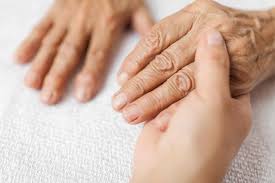The United States faces a fundamental mismatch between surging demand and insufficient capacity.
2026 Physician Fee Schedule, released in July, directs reimbursement toward remote monitoring and value-based care in the home.
Older adults can save tens of thousands of dollars annually by choosing assisted living communities over aging in place in their homes.
Unlike point solutions, Inspiren unifies resident safety, care planning, staffing, and emergency response into a single AI-powered platform.

 Companies continue to invent and introduce technology. In the face of the devastation and economic collapse precipitated by the pandemic, many tech firms soldier on, finding opportunity, re-spinning products, and announcing new capability. It is encouraging to see this sheer quantity of
Companies continue to invent and introduce technology. In the face of the devastation and economic collapse precipitated by the pandemic, many tech firms soldier on, finding opportunity, re-spinning products, and announcing new capability. It is encouraging to see this sheer quantity of  How essential has the Internet been during this pandemic? Read down the April
How essential has the Internet been during this pandemic? Read down the April  No understatement, these are very difficult times for nursing homes. First off, thousands of residents have died, and
No understatement, these are very difficult times for nursing homes. First off, thousands of residents have died, and  Seniors and technology – change is in the airwaves. In ways that could not have been anticipated six months ago, the technology marketplace (sellers and buyers) for older adults is accelerating in interest level and adoption. And that is likely an understatement. Following the
Seniors and technology – change is in the airwaves. In ways that could not have been anticipated six months ago, the technology marketplace (sellers and buyers) for older adults is accelerating in interest level and adoption. And that is likely an understatement. Following the  Saving seniors from Covid-19 means worsening isolation. In an article in the NY Times, Paula Span’s title said it all:
Saving seniors from Covid-19 means worsening isolation. In an article in the NY Times, Paula Span’s title said it all:  The older adult coronavirus statistics skew toward oldest. There are more than
The older adult coronavirus statistics skew toward oldest. There are more than